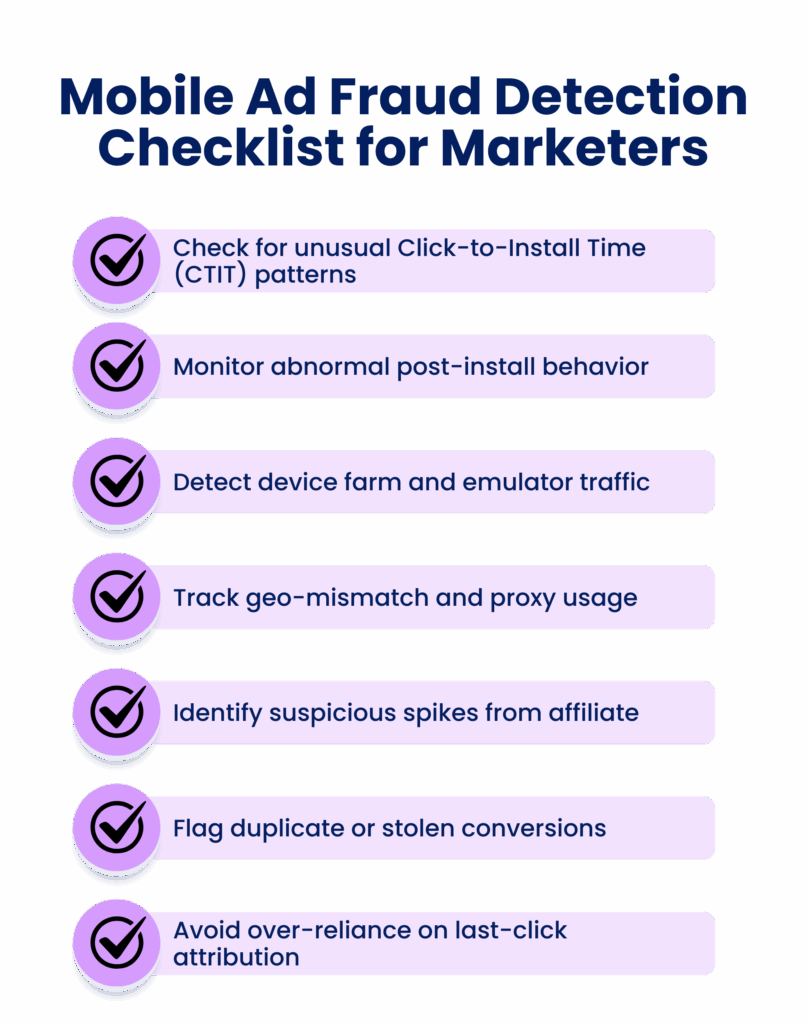The festive season in India is like a high-stakes battleground for consumer attention, and in 2025 the stakes are even bigger.
This year, brands are using all possible strategies with irresistible festive offers. More than ever, AI-powered tools are being used to personalize campaigns, predict shopping behavior, and create highly targeted festive experiences for consumers.
Recent reports reveal that digital ad spends are expected to shoot up by 15–25% this year. That’s over ₹60,000 crore expected to be invested (nearly half of the industry’s yearly budget) into the ecosystem in just a few weeks – Dussehra to New Year.
Moreover, shoppers are equally excited. 80% of brands plan to increase their festive budget compared to last year, and most of that action will happen on mobile-first platforms.
This is the golden time of the year for performance marketers to scale their app performance, boost customer acquisition, and maximize ROI.
However, scaling business growth through mobile advertising campaigns during the festive season is not as simple as it might sound. While brands prepare to shine, fraudsters prepare too – to drain festive ad budgets with fake installs, bot-driven clicks, click flooding tactics, event spoofing, etc.
And during high-stakes periods, when the competition is even more fierce, even a small leakage can snowball into lost sales and damaged ROI.
So, how do you make sure the glowing numbers on your dashboard aren’t just smoke and mirrors? The answer is – by detecting and preventing mobile ad fraud this festive season before it hits your bottom line.
TL; DR, what to expect from this article:
- Why mobile ad fraud spikes during the festive season?
- A hands-on checklist to spot and block mobile ad fraud
- The risks of ignoring fraud during festive season
- How an ad fraud detection solution helps protect performance campaigns?
Why Mobile Ad Fraud Peaks During Festive Season?
During festive seasons, whether it’s Diwali in India, Ramadan in the Middle East, or Black Friday across global markets, brands significantly increase their marketing investments. And fraudsters follow the money, waiting for chances like these. Moreover, affiliates and media partners also compete aggressively to deliver results in volume. This creates a perfect storm for sophisticated fraud tactics to slip through traditional ways of ad fraud detection.
Here’s why fraud peaks during festive campaigns:
1. Festive budgets attract fraudsters
When brands increase ad spends during the season, fraudsters see it as the perfect opportunity to grab a bigger portion of ad budgets as compared to normal days.
2. Traffic volumes overload systems
With millions of clicks and installs happening in a short span, it becomes tougher to spot which ones are real and which ones are fake without the right app fraud detection strategy in place.
3. Pressure to deliver numbers
Affiliates and media partners often push for higher volumes to deliver results on a faster and larger scale often using various methods, which means fraudulent traffic can slip through unchecked.
4.Short and intense campaign timelines
Festive campaigns usually run for a few weeks. In the rush to maximize results quickly, marketers don’t always get the time to investigate suspicious activity.
5. Shoppers are more active on mobiles
Since most festive shopping now happens on mobile, fraudsters use fake devices, bots, and emulators to mimic real user activity, making fraud harder to catch.
The Cost of Ignoring Mobile Ad Fraud During High-stakes Periods like Festive Season
Ignoring these red flags can be disastrous for brands running mobile advertising campaigns:
- Fraudulent traffic consumes budgets that should be driving real festive conversions.
- Customer acquisition costs also spike as fake installs get counted.
- Fraud makes campaigns look successful when in reality, genuine reach is limited.
- Every dollar wasted on fake users is one less spent reaching real shoppers.
- Poor campaign performance badly on brands and damages affiliate trust.
Festive campaigns have short windows, meaning there’s little room for error. But by the time mobile ad fraud is detected, the damage is already done.
The DIY Festive Season Mobile Ad Fraud Detection Checklist for Marketers
While recognizing sophisticated levels of mobile ad fraud requires an advanced AI-ML-based ad fraud detection solution to be in place, many patterns of fraudulent activities can be identified using simple observation.

This DIY checklist is made specifically for marketers to address mobile app fraud, affiliate fraud, and what to watch for:
1. Unusual Click-to-Install Time (CTIT) Patterns
Fraudsters flood fake clicks to hijack credit for real installs, distorting CTIT and attribution data, making affiliates look like they are delivering genuine users.
Festive Relevance:
- High install surges make fake CTIT timings harder to spot.
- Affiliates stuff clicks before festive installs to claim credit.
What to Watch For:
- Installs happening too fast (<10 seconds) often indicate bot-driven installs.
- Installs delayed too long (>24 hours) indicate click flooding.
- CTI < 0.1% likely indicates click spamming.
2. Abnormal Post-Install Behavior
Fraudulent or fake installs may look valid at first but fail to deliver meaningful engagement or purchases post-install, inflating top-of-funnel numbers while draining budgets.
Festive Relevance:
- Real festive shoppers browse more, add to cart, and purchase.
- Fraudsters simulate installs or spoof in-app events only to claim payouts.
What to Watch For:
- High installs with shallow sessions or instant exits.
- Zero meaningful actions like adds-to-cart or purchases.
3. Click Injection and Click Spamming
Fraudsters generate fake clicks just before a user installs your app organically, stealing credit from genuine traffic.
Festive Relevance:
- With installs surging, fraudsters have more organic actions to hijack.
- Affiliates exploit festive urgency to push suspicious click activity.
What to Watch For:
- Affiliates with sudden spikes in attributed installs.
- Install timelines overlapping heavily with organic traffic.
4. Device Farms and Emulator Traffic
Large-scale device farms and emulators simulate fake installs and user activity, tricking attribution systems into marking them as conversions.
Festive Relevance:
- Higher festive payouts make device farms highly profitable.
- Thousands of fake users can be generated overnight.
What to Watch For:
- Repeated installs from identical OS versions or device models.
- High device reset rates from the same source.
5. Geo-Mismatch and Proxy Traffic
Fraudsters use VPNs or proxies to fake compliance with geo-targeted campaigns, rerouting traffic from untargeted regions.
Festive Relevance:
- Brands target local buyers (e.g., India for Diwali), but fraudsters disguise traffic.
- Proxy traffic slips in easily amid festive scale.
What to Watch For:
- Installs tagged as “local” but originating from odd IPs.
- High share of VPN/proxy usage in logs.
6.Suspicious Conversion Spikes from Specific Affiliates
Certain affiliates inflate traffic volumes to hit KPIs or earn payout bonuses, producing suspiciously high installs.
Festive Relevance:
- Marketers often lift affiliate campaigns during the festive season.
- Fraudsters exploit this to deliver inflated, low-quality traffic.
What to Watch For:
- One affiliate delivering extreme growth vs. peers.
- Conversion spikes that don’t match user engagement trends.
7. Duplicate and Stolen Conversions
Fraudsters recycle device IDs or hijack attribution from genuine organic installs, stealing credit from legitimate channels.
Festive Relevance:
- Surging festive rush makes it easier to mask stolen conversions.
- Affiliates benefit by riding on authentic festive activity.
What to Watch For:
- Same device generating multiple installs.
- Affiliates consistently credited just before organic conversions.
8. Over-Reliance on Last-Click Attribution
Fraudsters exploit last-click attribution by flooding clicks, stealing credit from real channels that actually drive user intent.
Festive Relevance:
- Multiple festive campaigns (social, search, affiliate) run simultaneously.
- Fraudsters thrive by claiming the last touch before install.
What to Watch For:
- Affiliates disproportionately win last-click credit.
- Decline in organic or paid channel attribution despite spend.
- MMP reports showing 2–3x more in-app events
How mFilterIt Protects Performance Campaigns from Mobile Ad Fraud
While the DIY checks are a strong starting point to identify mobile ad fraud. However, the reality of app fraud is evolving faster than you know. Manual monitoring performance campaigns is not enough.
That is why, at mFilterIt, we help marketers safeguard their festive ad budgets using an advanced mobile app fraud detection solution – Valid8. It not only helps detect app fraud proactively but also offers down the funnel defense mechanism to ensure every user entering the funnel is genuine and provides real value to your brand. Here’s how:
1. Real-Time App Traffic Validation
Our ad fraud solution detects and blocks fraudulent clicks and installs the moment they happen. Instead of waiting for end-of-campaign audits, brands get immediate protection, ensuring budgets aren’t wasted on fake users. This real-time shield is especially critical during festive campaigns, where every minute and every rupee counts.
2. Active Source Blacklisting
Fraud doesn’t just come from one source, it often repeats. Valid8 continuously monitors affiliates, devices, and IP addresses to identify repeat offenders. Once flagged, they are actively blacklisted, stopping them from draining future campaigns. This proactive approach means you don’t just react to mobile advertising fraud; you stay ahead of it.
3. Full-Funnel Protection
Fraudsters exploit every stage of the user journey, from clicks to installs to post-install actions. Our ad fraud prevention solution provides end-to-end validation, analyzing not just clicks or acquisition but also engagement quality. By filtering fake activity at every level, marketers can be confident their festive campaign numbers reflect genuine customer interest.
4. Actionable Insights & Transparency
Most fraud detection tools stop flagging suspicious traffic. mFilterIt goes further, offering clear, transparent reporting with actionable insights. Marketers can see exactly where fraud originates, which affiliates are underperforming, and how budgets can be optimized. The result? Smarter decisions, cleaner data, and campaigns you can trust.
Therefore, with Valid8 by mFilterIt integrated into your performance campaigns, every click, install, and in-app event is validated, every affiliate is accountable, and every rupee is protected. This ensures festive season campaigns not only scale but also deliver authentic ROI without the hidden cost of app fraud.
Final Thoughts
Festive seasons are golden opportunities for brands to connect with high-intent shoppers and maximize sales. But they’re also the most dangerous times for mobile ad fraud to drain budgets unnoticed.
By following this DIY checklist, marketers can spot common mobile ad fraud tactics like click flooding, click spamming, device farms, geo-mismatch, and stolen conversions to prevent them from sabotaging campaigns. And by partnering with a trusted ad fraud solution provider like mFilterIt, brands gain full transparency and can move from reactive defense to proactive fraud prevention.
Because in the end, the formula is simple: clean traffic = real customers = profitable festive campaigns.
Want to see how your festive campaigns measure up against fraud? Get a traffic audit today.




